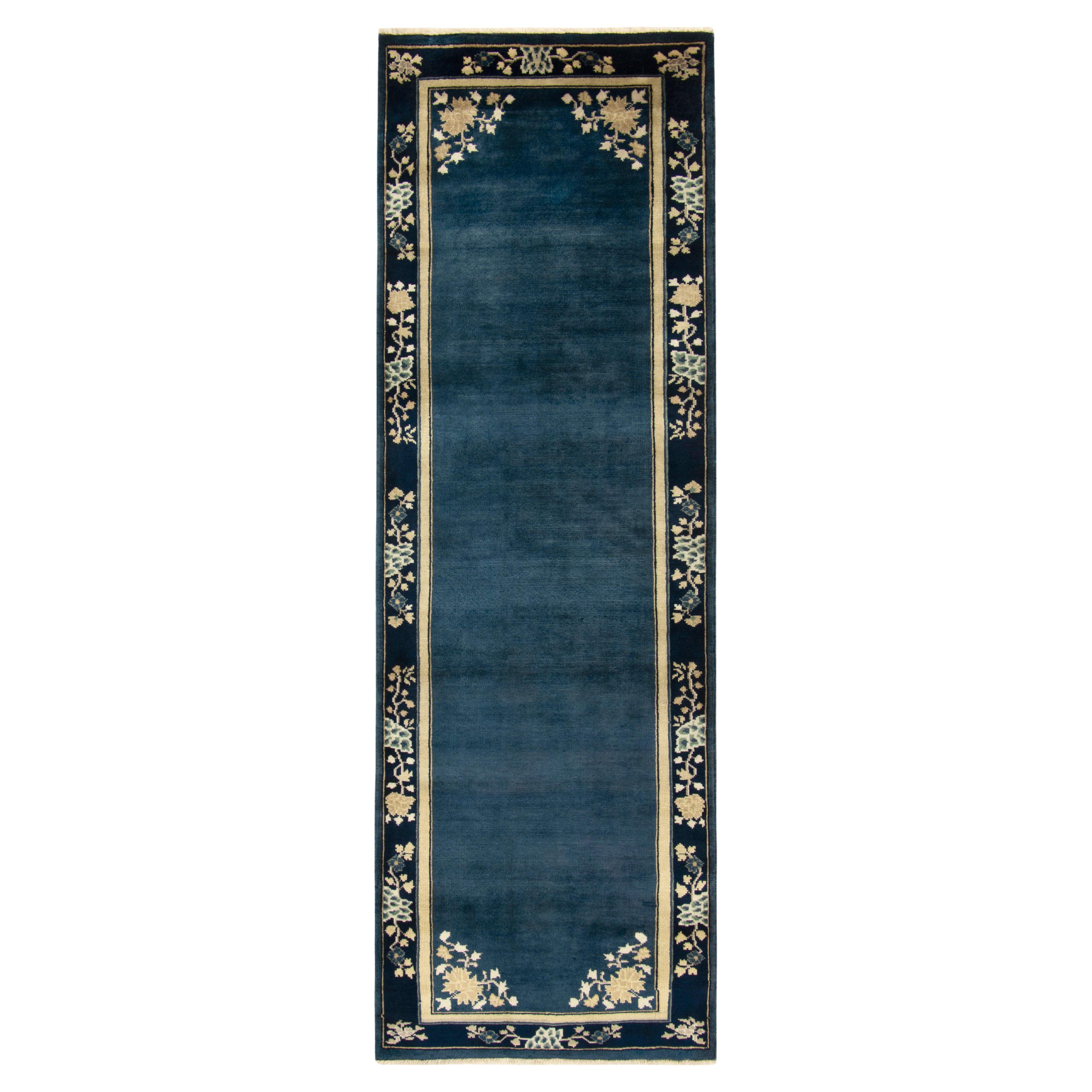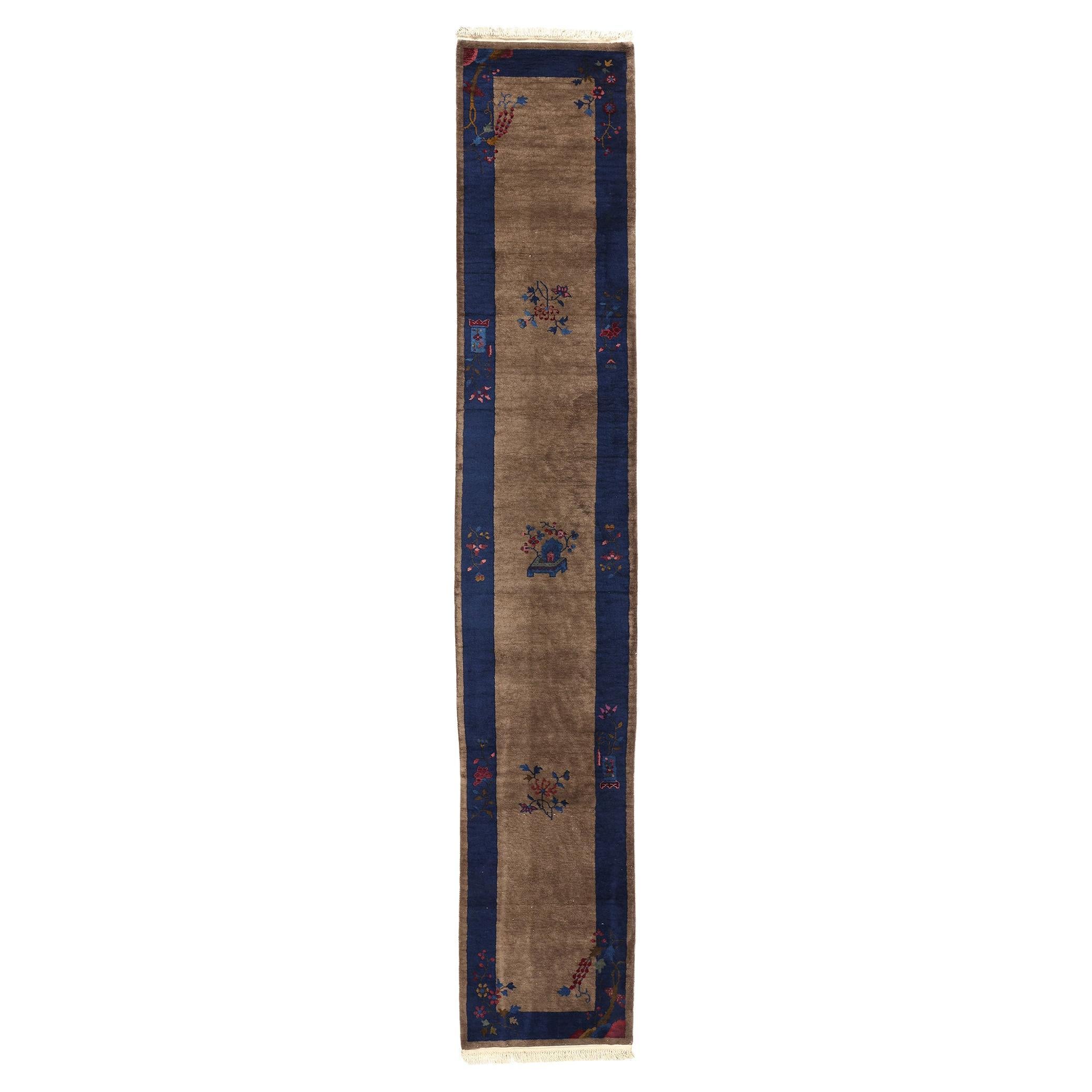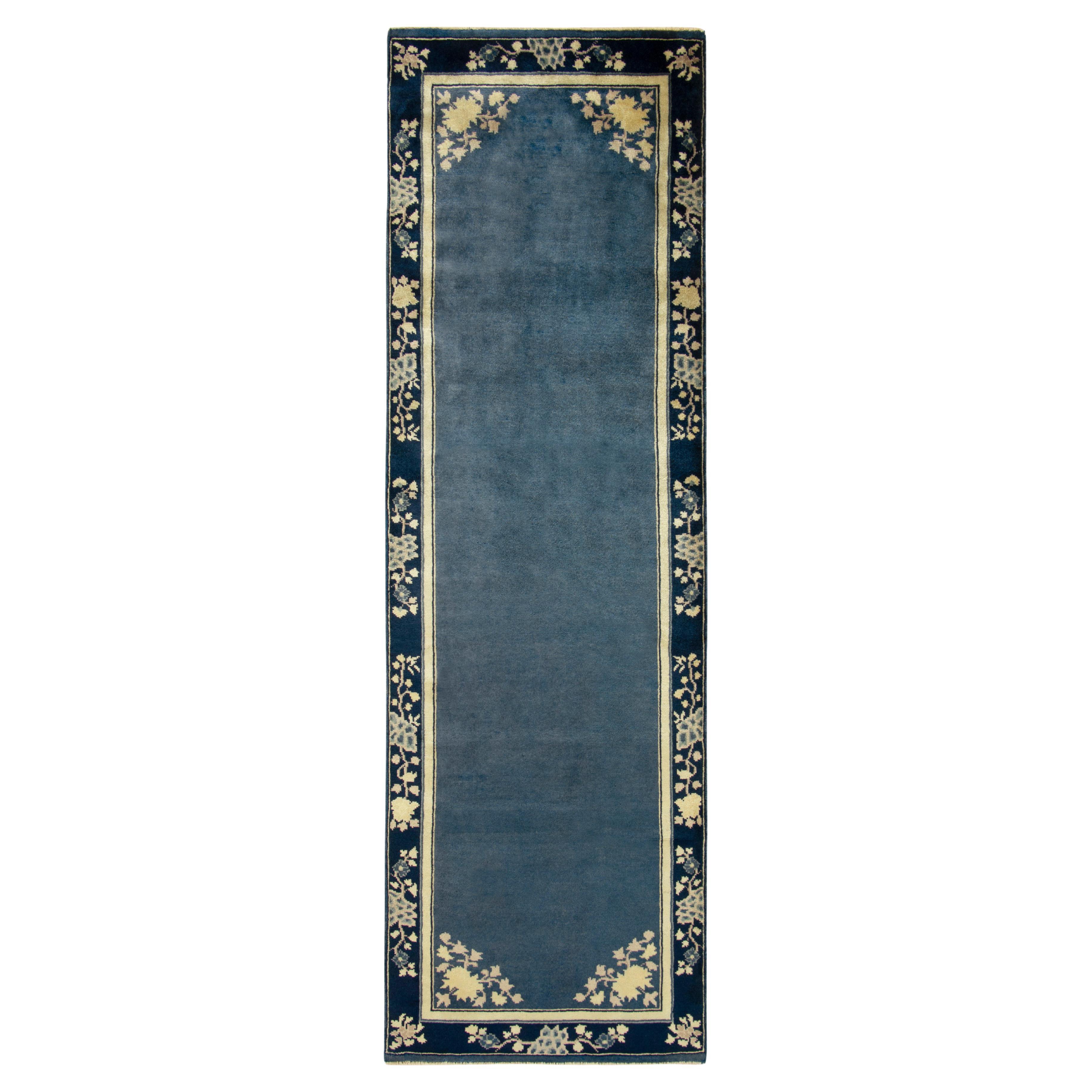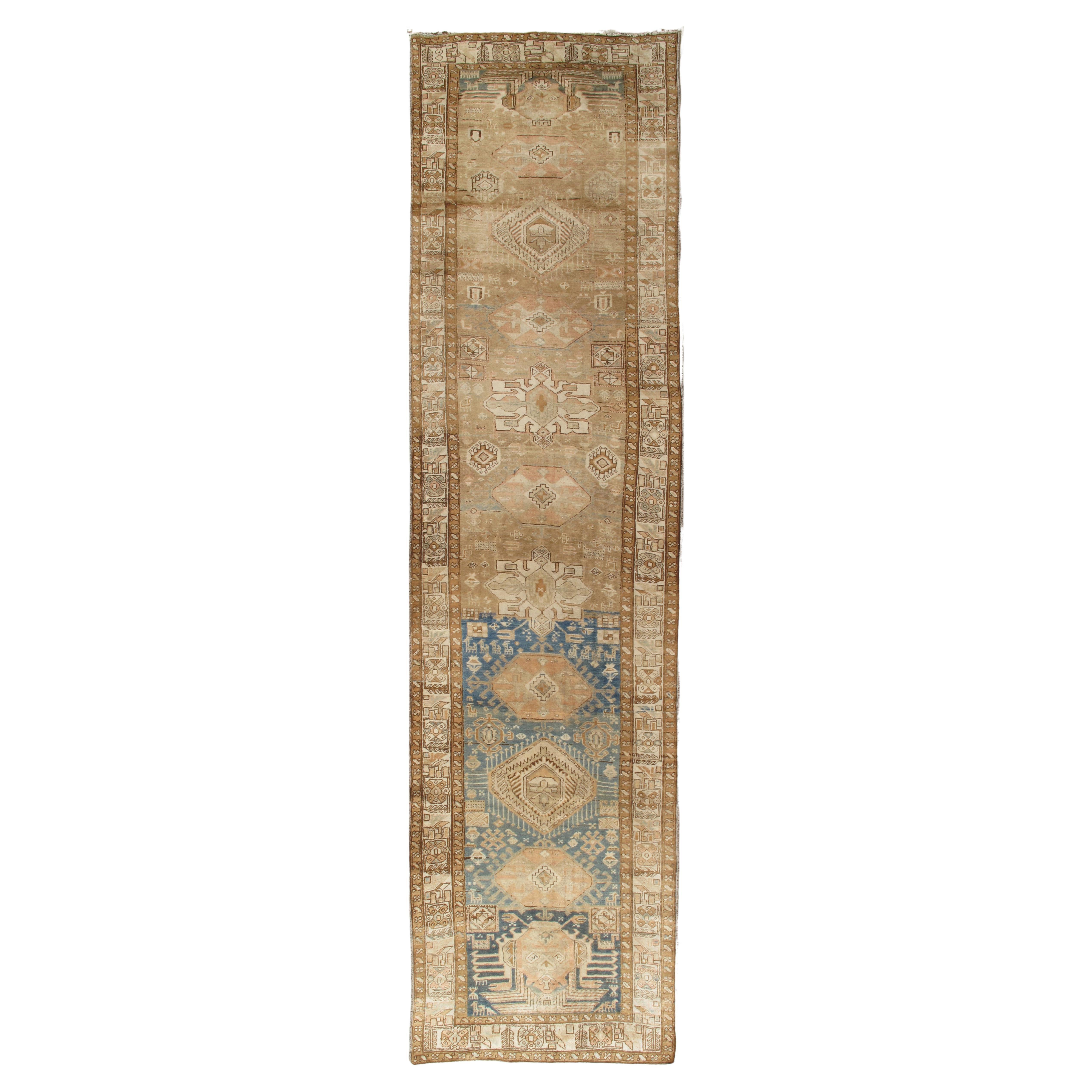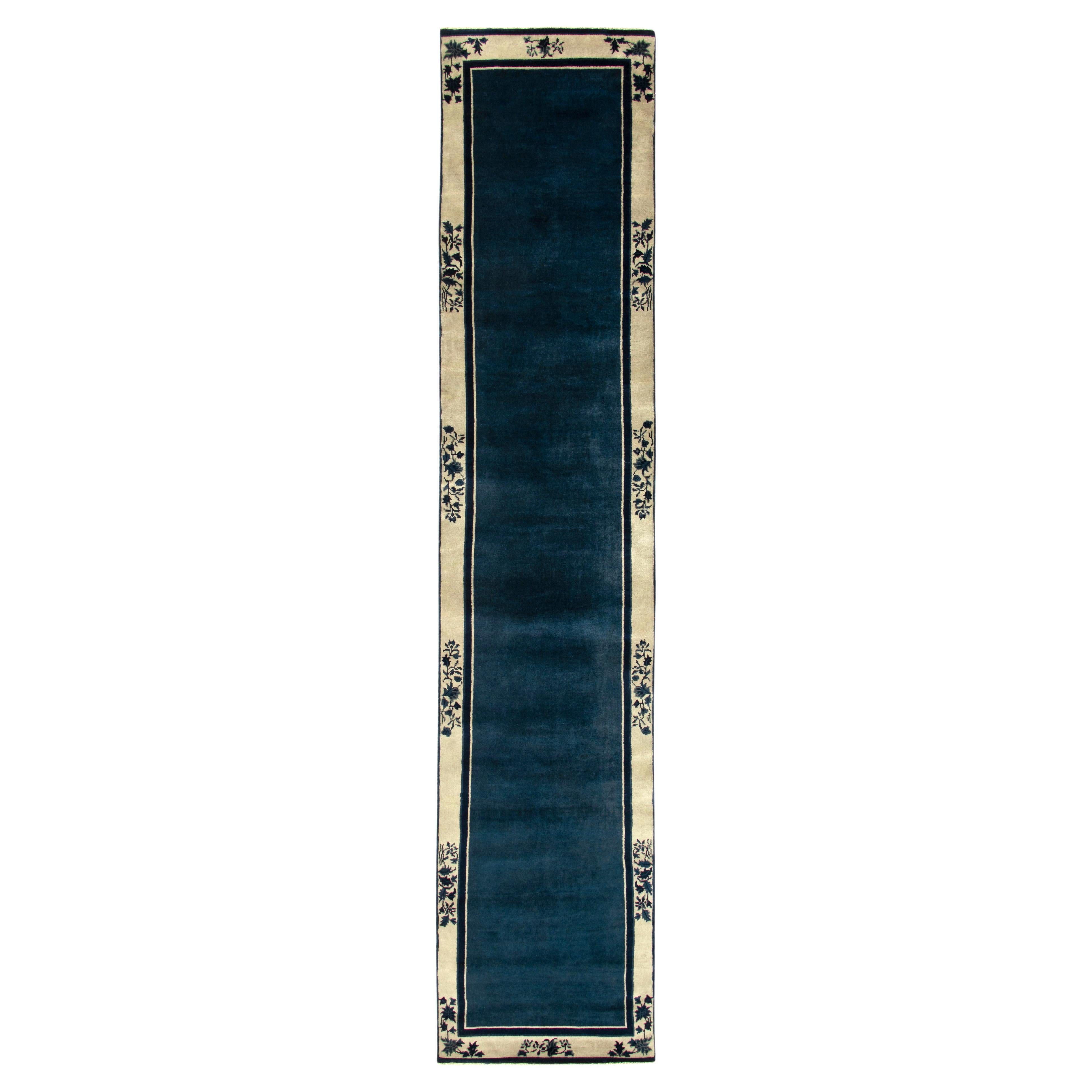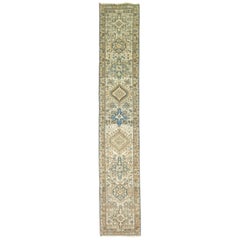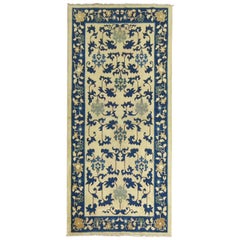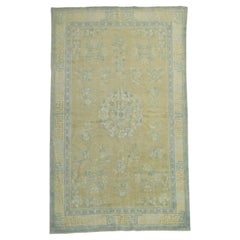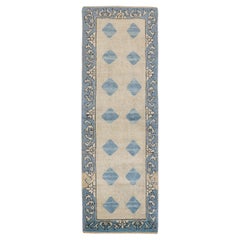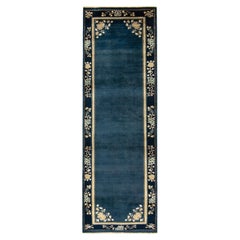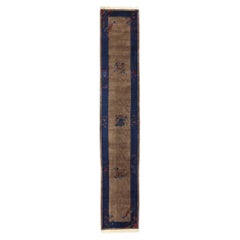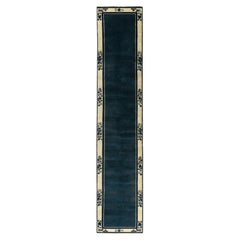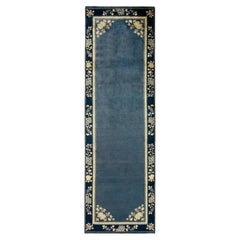Items Similar to Long Beige Blue Chinese Runner, Early-20th Century
Want more images or videos?
Request additional images or videos from the seller
1 of 10
Long Beige Blue Chinese Runner, Early-20th Century
$9,000
£6,761.05
€7,796.59
CA$12,488.67
A$13,877.67
CHF 7,272.05
MX$170,184.91
NOK 92,750.73
SEK 87,256.48
DKK 58,190.45
Shipping
Retrieving quote...The 1stDibs Promise:
Authenticity Guarantee,
Money-Back Guarantee,
24-Hour Cancellation
About the Item
Long 1920s Chinese runner with a solid open field design with floral motifs in beige with a lovely floral border in navy and light blue. Excellent condition.
Measures: 3' x 19'3".
- Dimensions:Width: 36 in (91.44 cm)Length: 231 in (586.74 cm)
- Style:Rancho Monterey (In the Style Of)
- Materials and Techniques:Wool,Hand-Woven
- Place of Origin:
- Period:
- Date of Manufacture:circa 1920
- Condition:Wear consistent with age and use.
- Seller Location:New York, NY
- Reference Number:Seller: 31162 J &D Oriental Rug Co.1stDibs: LU908721507142
About the Seller
5.0
Platinum Seller
Premium sellers with a 4.7+ rating and 24-hour response times
Established in 1975
1stDibs seller since 2011
1,550 sales on 1stDibs
Typical response time: <1 hour
- ShippingRetrieving quote...Shipping from: New York, NY
- Return Policy
Authenticity Guarantee
In the unlikely event there’s an issue with an item’s authenticity, contact us within 1 year for a full refund. DetailsMoney-Back Guarantee
If your item is not as described, is damaged in transit, or does not arrive, contact us within 7 days for a full refund. Details24-Hour Cancellation
You have a 24-hour grace period in which to reconsider your purchase, with no questions asked.Vetted Professional Sellers
Our world-class sellers must adhere to strict standards for service and quality, maintaining the integrity of our listings.Price-Match Guarantee
If you find that a seller listed the same item for a lower price elsewhere, we’ll match it.Trusted Global Delivery
Our best-in-class carrier network provides specialized shipping options worldwide, including custom delivery.More From This Seller
View AllNarrow Rustic Persian Heriz Runner Ivory Brown Blue Tones
Located in New York, NY
Very narrow one of a kind Persian Heriz runner from the second quarter of the 20th century. Blue, brown tones on an ivory ground. The size is original,
circa 1940s, measures: 1'11...
Category
20th Century Persian Rustic Persian Rugs
Materials
Wool
Ivory Blue Chinese 20th Century Throw Rug
Located in New York, NY
An early 20th century Chinese peking throw rug. Cream field with blue accents.
3' x 5'10''
Category
Vintage 1910s Chinese Tibetan Chinese and East Asian Rugs
Materials
Wool
Champagne Mustard Soft Blue Chinese Rug
Located in New York, NY
An intermediate size Chinese Peking rug in soft blue and champagne tones from the early 20th century
5'3'' x 8'1''
Category
Vintage 1920s Chinese Export Chinese and East Asian Rugs
Materials
Wool
Blue Tan Small Turkish Runner
Located in New York, NY
Mid 20th Century beige/tan and blue Turkish Runner
size 2' 2" x 6' (66 x 183 cm).
Category
Mid-20th Century Mid-Century Modern Turkish Rugs
Materials
Wool
Zabihi Collection Antique Persian Blue Salmon Runner
Located in New York, NY
An early 20th-century Persian Runner.
2'7'' x 10'2''
Category
Early 20th Century Persian Malayer Persian Rugs
Materials
Wool
Pale Blue Antique Chinese Rug
Located in New York, NY
Enchanting early 20th century highly decorative Chinese Peking rug with an abrashed light blue field The wool and feel of the rug is very soft on the feet. It has a silky sheen to it...
Category
Early 20th Century Chinese Ming Chinese and East Asian Rugs
Materials
Wool
You May Also Like
Vintage Chinese Deco Style Runner in Deep Blue White, Gold Floral by Rug & Kilim
Located in Long Island City, NY
A 3x8 hand-knotted vintage runner connoting Chinese art deco inspirations of the 1920s, from the newest line of Rug & Kilim’s Antique & Vintage collection. The clean blue open field ...
Category
Vintage 1980s Armenian Art Deco Indian Rugs
Materials
Wool
Antique Brown and Blue Chinese Peking Rug Carpet Runner
Located in Dallas, TX
78200 Antique Chinese Peking Rug Runner, 02'07 x 14'04. Behold the timeless allure of this meticulously hand-knotted wool antique Chinese Peking rug runner, where artistry and nature...
Category
Early 20th Century Chinese Chinese Export Chinese and East Asian Rugs
Materials
Wool
$7,728 Sale Price
20% Off
Vintage Chinese Deco Style Runner in Blue OffWhite Floral Pattern by Rug & Kilim
Located in Long Island City, NY
A 3x12 hand-knotted wool vintage runner connoting Chinese art deco sensibilities of the 1920s, coming from Rug & Kilim’s Antique & Vintage collection. The clean blue open field enjoy...
Category
Vintage 1980s Indian Art Deco Indian Rugs
Materials
Wool
Vintage Chinese Deco Style Runner in Deep Blue, White Gold Floral by Rug & Kilim
Located in Long Island City, NY
A 3x8 hand-knotted vintage runner connoting Chinese art deco inspirations of the 1920s, from the newest line in Rug & Kilim’s Antique & Vintage collection. The clean blue open field ...
Category
Vintage 1980s Indian Art Deco Indian Rugs
Materials
Wool
Antique Malayer Runner, Handmade Oriental Rug, Ivory, Taupe, Gold, Light Blue
Located in Port Washington, NY
Malayer is a large village located between the major weaving areas of Hamadan and Sarouk in northwest Persia. In Malayer and the small villages surrounding it, production was almost ...
Category
Early 20th Century Persian Malayer Persian Rugs
Materials
Wool
$4,799 Sale Price
20% Off
Vintage Chinese Deco Style Runner in Blue, White Floral Pattern by Rug & Kilim
Located in Long Island City, NY
A 3x12 hand-knotted wool vintage runner connoting Chinese art deco sensibilities of the 1920s, coming from Rug & Kilim’s Antique & Vintage collection. The clean blue open field enjoy...
Category
Vintage 1980s Indian Art Deco Indian Rugs
Materials
Wool
More Ways To Browse
Chinese Art Deco Rug Yellow
Tibetan Rug Red
Chinese Imperial Carpet
Chinese Imperial Rug
Antique Mongolian Furniture
Japanese Antique Furniture Chinoiserie
Small Tibetan Rug
Chinese Green Silk Rugs
Walter Nichols Chinese Art Deco Rugs
Walter Nichols Rug
Chinese Roundel
Chinese Carpet Lotus Flower
Art Deco Pagoda
Bao Bao
Rugs Mongolia
Chinese Rug 10 X 14
Mongolia Carpet
China With Violets
